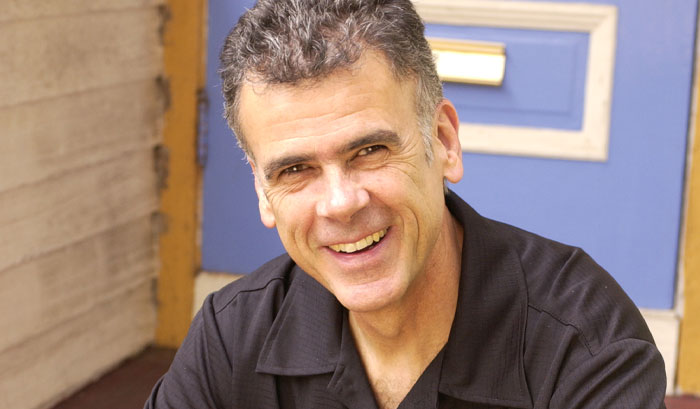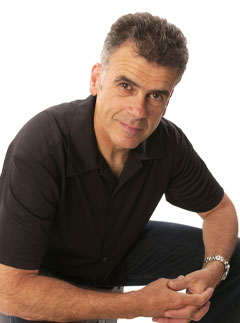


To some, the phrase "funky drummer" connotes a James Brown drum loop that's been done to death via innumerable remixes. But in the case of Tower of Power drummer David Garibaldi, the words signify a lifelong commitment to drums education, and the eternal search for powerful new grooves.
The San Francisco Bay Area native took up the drums at age 10. In 1966, he joined the United States Air Force, serving three years with the 724th USAF band. After leaving the service he joined legendary Oakland, CA, funk ensemble Tower of Power and promptly became one of the most influential players of his generation.

"I'd started out playing jazz with a big band," recalls Garibaldi. "I was also playing in rock-and-roll bands. Even when I was in the military I played off the base a lot in addition to the daily concert band. But, after the military, I decided to take everything I'd learned in various idioms and apply it all to funk, because I loved that style so much. I always liked the James Brown records where there was just one, unchanging, hypnotic groove."
Tower of Power brought turn-on-adime musicianship to a music scene better known for free-spirited spontaneity than precise playing. The band's "secret," says David, was simple: "We just played all the time. When the band wasn't touring we would literally rehearse every day of the week. And because we played so much, there were always lots of ideas going on. A lot of our material came out of group jams."
Tower of Power is justly famed for its groundbreaking horn section, but such hits as "Down to the Nightclub," "You're Still a Young Man" and "What is Hip?" owe at least as much to the pace-setting rhythm section work of Garibaldi and bassist Rocco Prestia.
Garibaldi and the band parted ways in the mid '70s. David went on to work with Patti Austin, Natalie Cole, Mickey Hart's Planet Drum, Boz Scaggs and many others. He also wrote books and articles on drumming. And then in 1998 Tower's bandleader, saxophonist Emilio Castillo, asked Garibaldi to rejoin the group.
I've always believed you should never limit yourself to one type of music.
"I wasn't sure I wanted to go back at first," says David. "But we agreed to try one tour together, and from the first day of rehearsals, it was like I'd never gone away. I started gigging with the band again and never stopped."
Garibaldi has relied on Yamaha drums for well over twenty years. "I've never had a reason not to play Yamahas," he says. "The drums consistently sound great, and I've had great relationships with the people in the company for many years. Yamaha has everything: All the great instruments. Innovative technology that's constantly being upgraded and cool clinic programs. It's a great company to be with."
These days Garibaldi's main kit is a Recording Custom. "I like the way the fatness of the birch shells sounds with the band," he says. "I like pretty much the standard depths--usually a 22" x 14" bass drum, sometimes a 22" x 16". My toms are 10", 13", and a suspended 16", with traditional depths. My tuning concept revolves around the idea of toms that are equidistant in size. I find that with a more traditional 12"/13"/16" arrangement, it's hard to get both the 12" and 13" to sound good. The evenly-spaced sizes give a nice, evenly spaced tuning." Recently, David has also been gigging with an SKRM-100 Subkick. "It's amazing," he says. "It gives you all those real woofer subs."
David also collaborated with Yamaha Drums to create his own signature snare. "It's brass, a little similar to the brass piccolo Yamaha came out with in the '80s.
But mine has a regular throw-off snare strainer, not the extended one on the piccolo. I also added three vent holes and a die-cast hoop on the top. It's a cool looking blue anodized brass. The tuning is awesome--it can sound six or eight inches deep, just according to how you tune it. It's pretty cool."
Garibaldi, still an ardent jazz fan, says he hopes to start his own jazz project before long. He sees no contradiction between the complexity and ongoing variation of jazz and the self-imposed restraint of funk. "It's like being bilingual," he explains. "My wife speaks three languages and can go in and out of them at will. It's the same with someone who can play several styles of music well. My ears have always been open to multiple styles. I've always believed you should never limit yourself to one type of music."
























